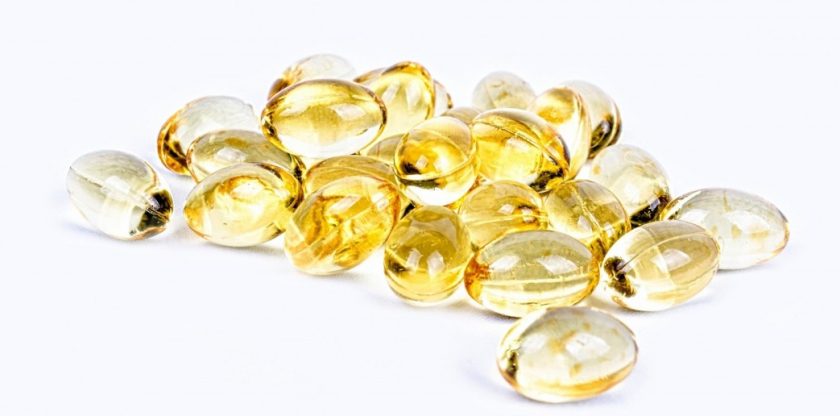Vitamins were discovered a hundred years ago. At the beginning, there were only thirteen organic compounds that belong to this category. There were also some common compounds that many scientists usually classified as vitamins.
But in fact, their number is unchanged even today, since each of the compounds has a special series of actions that can have on the body.
The role of vitamins
Catalysts of natural origin – this is what vitamins can be called, in effect none of the chemical reactions in the body can do without them. Proteins, carbohydrates, lipids are broken down every minute and this process does not stop even when a person is sleeping.
It is very important to highlight one feature: the body is not able to produce vitamins on its own, which means that their quantity must be replenished “from the outside”. Only in this case is it possible to talk about the health and proper functioning of the organs.
If the body does not grab any of the elements, metabolic disturbances may occur. Such violations can provoke both weight gain and much more serious diseases.
Types of vitamins
The assumptions are wrong that some acids, as well as minerals, also belong to vitamins. That is why science distinguishes special vitamin-like compounds.
They can not be considered full-fledged vitamins, however, they also play a huge role not only in the healthy development of the body, but also in the absorption of basic substances.
Pro-vitamins
This category includes those elements that help produce certain fat-soluble vitamins. The group of pro-vitamins includes A and D. The following pro-vitamins are produced from their compounds:
- Ergosterol;
- Retinal;
- Calciferous;
- 7-dehydrocholesterol, as well as some others.
Vitamin-like substances
This type does not include vitamins, but compounds that may possess one or another of their characteristics, although they do not have all their properties. The following important compounds can be distinguished:
- Choline;
- Lipoic acid;
- Carnitine;
- Bioflavonoids;
- Inositol.
Vitamin List
Lack of substances of one nature or another can lead not only to poor health in general, but also to the development of quite serious diseases. All vitamins can be divided into water and fat soluble.
Vitamins such as K, E, D, F, A can be attributed to the second category, and all others are water-soluble. Turning to the table, you can see why this or that compound is necessary, as well as what happens if the body experiences an excess or shortage of it.
| Vitamins | Why do we need it? | Deficiency | What excess will lead to | Vitamin Source |
| Vitamin A | In a section like vitamins, it is one of the most important components that provide visual acuity. It also occupies one of the main places that regulate human growth. It is able to strengthen the immune system and increase the body’s resistance to infections, as well as diseases affecting the lungs and oral mucous. | Visual acuity is reduced, including in the dark. There is brittle hair, dry skin, rashes with the accumulation of pus are also possible. | When there is an excess in the blood of this vitamin, a sharp increase in cholesterol is observed. Symptoms such as itching, vomiting, head and joint pain, peeling of the skin, as well as rashes on it, fever, increased irritability appear. | Egg yolk, spinach, milk, onions, cod, tomatoes, carrots, currants, oranges, fish oil, as well as other vegetables and fruits. |
| Vitamin B1 | Improves the digestive tract, promotes the formation of appetite, helps normalize the functioning of the nervous system. | The appearance of insomnia, nervousness, as well as depression. The skin condition worsens, the appearance of blackheads, bags under the eyes is possible, libido is reduced. | Low toxicity, therefore, an overdose is rare. With avitaminosis, the appearance of allergic rashes, shortness of breath, a feeling of anxiety, a rash, trembling, itching are possible. Possible negative effects on the kidneys and liver. | Meat, flour, dairy products, sunflower, peas, sprouted wheat, beans, cauliflower. |
| Vitamin B2 | Promotes the processes of tissue growth, helps the development of color perception, sebaceous glands work better. | Decreased appetite, weakness, cracks in the skin and lips, headache, pain in the eyes. | The development of photo-phobia, the appearance of small cracks on the lips, cardiac abnormalities, cramps in the calves of the legs, dizziness. | Oatmeal, milk, brewer’s yeast, almonds, cabbage. |
| Vitamin B3 | Helps maintain the required level of glucose in the blood, improves the digestive tract, improves appetite, memory and brain function. | Perhaps the appearance of inflammatory processes in the mouth, diarrhea, abdominal pain, constipation, vomiting, peeling of the skin, its redness. | Nausea, diarrhea, vomiting, redness of the skin, impaired liver function. | Cereals, eggs, tuna, liver, mushrooms, dairy products. |
| Vitamin B5 | Promotes the normal functioning of the nervous system and thyroid gland, helps to increase life expectancy. | Dryness and sagging of the skin, memory impairment, hair loss, seizures in the extremities are possible. Significantly disturbed metabolic processes. | Long diarrhea, as well as other problems with stool, fluid retention in the body. | Vegetables, dairy products, fruits, kidneys, egg yolk, trout. |
| Vitamin B6 | One of the most important components that ensure the functioning of the nervous system, and is also able to accelerate all the chemical processes of the body. | The deficiency affects the condition of the skin and can lead to dermatitis or eczema. Ailments, the appearance of general fatigue, anemia, seizures and cramps are also possible. | Decreased sensitivity of the limbs, the development of their numbness, weakness in the muscles. In this case, it is possible to maintain temperature and tactile sensitivity. | Bananas, halibut, cabbage, bell peppers, tomatoes, asparagus, onions, avocados, melon, salmon, strawberries. |
| Vitamin B12 | It is extremely important for the formation and growth of new red blood cells and cells, as well as in the construction of nerve fibers. | It leads to the appearance of a large amount of dandruff, the appearance of weakness and numbness, as well as menstrual irregularities. In addition, the risk of developing anemia is significantly increased. | Slowing blood circulation, as well as the occurrence of congestion. There is a risk of serious consequences such as pulmonary edema and the appearance of anaphylactic shock, allergic reactions. | Milk, fish, seaweed, meat, liver. |
| Vitamin E | It is famous for its ability to significantly reduce skin aging processes. It also helps to ensure the normal functioning of germ cells and has a positive effect on muscle tissue. | Negative changes in the muscles, decreased immunity. Women have a high risk of miscarriage during pregnancy. | Weakness, dizziness, chronic fatigue, malfunctioning of the heart, the appearance of arrhythmia, indigestion, headache, fatigue, increased risk of bone fractures, a feeling of bifurcation in the eyes. | Cabbage, salad, various oils, raspberries, almonds, spinach. |
| Vitamin D | Promotes the most complete assimilation of calcium, improves the functioning of the heart muscle, improves blood coagulation, helps the formation and full growth of bone tissue. | Visual impairment, the manifestation of such negative qualities of bones as fragility, porosity. Children may develop rickets. | Inactivity, lethargy, weight deficiency, seizures and fever are possible. The appetite also decreases, muscle weakness, vomiting quickly develops. The chronic form of avitaminosis can subsequently cause the formation of stones in organs, as well as the deposition of salts. The risk of osteoporosis and atherosclerosis significantly increases. | Dairy products, yolk, as well as all seafood. In addition, vitamin D is able to be produced by the body when in the sun. However, after the appearance of tanning, its development will resume only if it disappears. |
| Vitamin C | The most famous of all vitamins in general. It has the ability to enhance immunity and develop resistance to infectious diseases. Promotes the processing of iron and reduces the amount of cholesterol in the blood. | Decrease in working capacity and resistance to diseases, there is a risk of contracting scurvy. Appetite worsens. | Redness of the skin, itching of the skin, weakness. | Horseradish, wild rose, pepper, mountain ash, currant, lemon, parsley. |
| Vitamin K | Essential for the body’s ability to clot blood. | The risk of bleeding not only external, but also internal, increases significantly, which will be very difficult to stop. | Curvature of teeth, pain in bones and joints, peeling and yellowing of the skin, anemia, the occurrence of itching, increased pressure. | The body produces it with the help of special bacteria in the colon. It is also found in foods such as nuts, lettuce, soybean oil, tomatoes, and nettles. |
| Vitamin H | It nourishes the cells of the nervous system, ensuring their vital functions. | Nausea, drowsiness, loss of appetite, depression, problems with the condition of the skin, problems with nails and hair (exfoliation and loss). | It is rarely detected. In very large dosages, it can cause impaired kidney function. | It is also produced in the body, but with prolonged infections it is recommended to eat the following products: salad, salmon, oatmeal, yeast, mushrooms, legumes, mackerel, bananas, nuts. |
| Vitamin P | Strengthens capillary walls, helps regulate blood sugar levels, lowers negative qualities such as fragility and vascular permeability. | Ailments, weakness, the appearance of small bleeding due to rupture of small capillaries. | Cases of avitaminosis are very rare, but can develop with too long doses. An excess of vitamin is manifested due to the following symptoms: sensation of heat, hyperemia of the skin of the neck, face, chest, | Rose-hip, cherry, citrus, currants, grapes, nuts, cranberries. |
Multivitamins
Multivitamins are drugs of pharmacological as well as natural origin, which include a large number of vitamins. Most often, they are also connected with minerals.
To natural multivitamins that have a strictly organic origin, it is customary to attribute only one component on the planet – breast milk. The necessary compounds and vitamins in it were originally laid down by nature, and are extremely important for an infant.
Multivitamins are designed to make up for complex deficiencies of substances that can occur in the body. They also help get rid of eating disorders such as paratrophy and malnutrition.
Experts say that it is best to use organic foods that are rich in one or another vitamin. But, taking into account the fact that sometimes portions of food to meet the daily need for some compounds are so large that they simply cannot be eaten, they recommend taking vitamin complexes regularly.
Anti vitamins
They represent a special group of organic compounds that are able to suppress the effect of vitamins and their biological activity. In general, they are very similar in structure to the vitamins themselves, but have the opposite effect.
Once in the human body, they can cause disturbances in the metabolic processes, inhibit the absorption of substances and thereby negatively affect all organs. In this case, the development of avitaminosis is possible, even if vitamins and beneficial compounds in sufficient quantities enter the body.
Conclusion
If there is a need to take more vitamins, all recommendations must be carefully observed and not exceeded. The lack of vitamins, as well as their excess can greatly harm the body.
It is important to include in your diet foods that contain all these essential vitamins and take as little chemical drugs as possible. More than 70 percent complete, properly built nutrition helps to fill the daily dose for these beneficial compounds.




